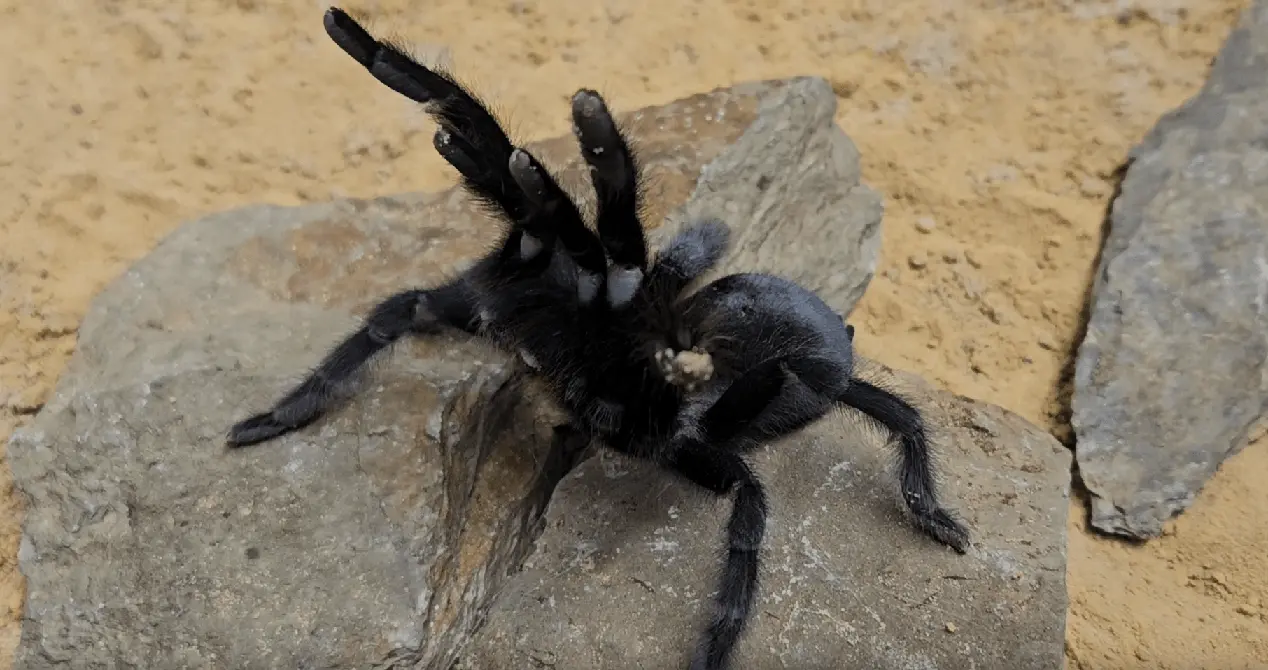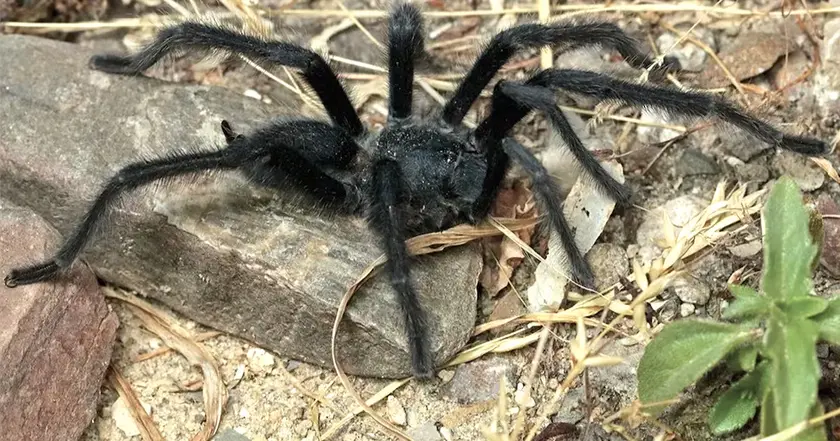T4K3.news
New tarantula species discovered with record-breaking features
Scientists have identified four new tarantula species with exceptionally large sexual organs.

Scientists have discovered new tarantula species with remarkably large sexual organs.
New tarantula species reveal astonishing sexual adaptations
Researchers have recently identified four new species of tarantulas, one of which, Satyrex ferox, exhibits unusually large sexual organs. This tarantula's palps, used by males to transfer sperm, can measure 2 inches in length, almost as big as their legs, with the leg span reaching about 5.5 inches. Interestingly, the primary function of these large palps appears not to be mate attraction. Instead, researchers suggest that these adaptations may help male spiders avoid being cannibalized by aggressive females after mating. Dr. Alireza Zamani from the University of Turku explains that the length of the palps could allow males to maintain a safer distance during the mating process. The species name Satyrex ferox refers to its fierce nature, drawing inspiration from mythological beings known for their large genitalia.
Key Takeaways
"The males of these spiders have the longest palps among all known tarantulas."
Dr. Zamani highlights the unique adaptation of Satyrex ferox.
"At the slightest disturbance, it raises its front legs in a threat posture."
Dr. Zamani describes the defensive behavior of the new species.
This discovery challenges traditional views about sexual selection in tarantulas, suggesting that survival tactics may play a critical role in their mating behaviors. The large palps of the Satyrex ferox not only highlight the complexity of sexual adaptations but also point to a broader narrative in the animal kingdom about how species evolve to survive in hostile environments. The dynamics of sexual interaction in these spiders could reflect the intricate balance between attracting mates and ensuring one's own safety, inviting further research into how these behaviors develop and their implications for species survival in changing ecosystems.
Highlights
- Nature always finds a way to adapt to survive.
- Size matters in the spider world, but for different reasons.
- Long palps mean safer mating for male tarantulas.
- Evolution is full of surprises, even in the spider kingdom.
Research reveals potential threats to tarantula species
The aggressive mating behaviors and adaptations of Satyrex ferox raise concerns about their survival in the wild, highlighting the fragile balance in predator-prey dynamics in their ecosystems.
These findings open new doors for understanding tarantula dynamics and their evolutionary strategies.
Enjoyed this? Let your friends know!
Related News

New Mole Fossil Found That Changes Evolution Understanding

Scientists identify a new human species named Homo juluensis

New tarantula species discovered with extreme adaptations

New games launch on Nintendo eShop

Discovery in Grand Canyon challenges views on life's origins

New Ecosystem Found 9,533 Meters Undersea

A Minecraft Movie premieres with a star-studded cast

Microbe redefines life boundaries
